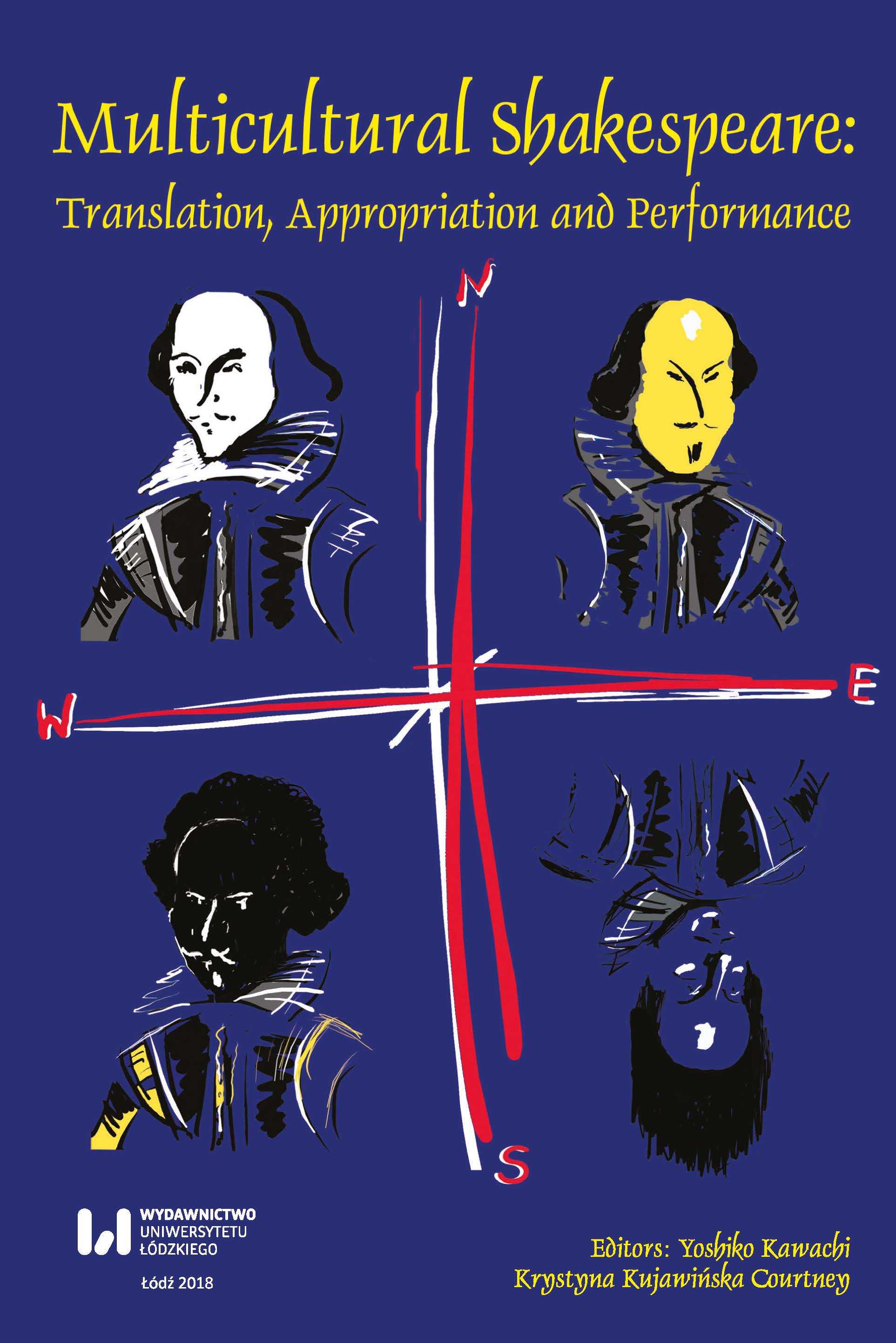Shakespeare’s Hamlet/Hamlet, Shakespeare 3.0, and Tugged Hamlet, The Comic Prince of The Polish Cabaret POTEM
DOI:
https://doi.org/10.18778/2083-8530.17.08Keywords:
Hamlet, cabaret performance, parody, digital ShakespeareAbstract
Shakespeare’s dramas are potentialities. Any Hamlet may be understood as the space in which Shakespeare’s thoughts are remembered, as a reproduced copy of the unspecified, unidentified source, the so called original. Simultaneously, it may be conceived of as the space where Shakespeare’s legacy and authority is tested, trifled and transgressed. Nowadays Shakespeare’s dramas are disseminated in multifarious forms such as: printed materials, audio and video recordings, compact audio discs, digital videos and disc recordings. Since I am fond of the cultural phenomenon called Hamlet, not a singe text or performance, but a continuum of human interaction with intermediated and transcoded versions of the drama, in this article I focus on the abovementioned single play. I accentuate the title character’s profound meaning in Shakespeare studies and his iconic status in Western culture in different media. I exploit W.B. Worthen’s concept of “Shakespeare 3.0.” to demonstrate Shakespeare’s presence in digital reality on the example of a comic rendering of Hamlet (Tugged Hamlet, 1992) by the Polish cabaret POTEM. Their cabaret sketch, although it was not created for the Internet audience, is available on-line via YouTube, consituting “Shakespeare 3.0.” Furthermore, I pose several questions and attempt to answer them in the course of my analysis: to what extent does the image of a mournful and contemplative Hamlet pervade different dimensions of culture, especially our collective imagination?; what chances of realization has a cultural fantasy of challenging the myth of a witty and contemplative Hamlet when re-written and presented as a pastiche or satire?; was the Polish cabaret POTEM succesful in their comic performance?
Downloads
References
Bloom, Harold. Shakespeare: The Invention of Human, Shakespeare: The Invention of the Human. New York: Riverhead Books, 1998.
Google Scholar
Crowl, Samuel. Screen Adaptations: Shakespeare’s Hamlet: The Relationship Between the Text and Film. London and New York: Bloomsbury Arden Shakespeare, 2014.
Google Scholar
Freud, Sigmund. The Interpretation of Dreams. Harmondsworth: Penguin Freud Library; vol. 4, 1976.
Google Scholar
Harry, Levin. The Question of Hamlet. Oxford: Oxford University Press, 1959.
Google Scholar
Shaw, George Bernard. Shaw on Shakespeare. Ed. Edwin Wilson. New York: E.P. Dutton, 1961.
Google Scholar
White, R.S. Avant-garde Hamlet. London: Rowman & Littlefield, 2015.
Google Scholar
Wilson, John, Dover. What Happens in Hamlet, 1935. 3rd ed. Cambridge: Cambridge University Press, 1990.
Google Scholar
Worthen, W.B. Drama: Between Poetry and Performance, Chichester: Wiley Blackwell, 2010.
Google Scholar
Worthen, W.B. “Performing Shakespeare in Digital Culture.” The Cambridge Companion to Shakespeare and Popular Culture. Ed. Robert Shaughnessy. Cambridge: Cambridge University Press, 2007. 227-47.
Google Scholar
Worthen, W.B. “Shakespeare 3.0: Or Text versus Performance, the Remix.” Alternative Shakespeare 3. Ed. Diana E. Henderson. London and New York: Routledge, 2008. 54-77.
Google Scholar
POTEM. Hamlet targany [Tugged Hamlet]. http://www.sikora.art.pl/bin/txt_story_potem.html (accessed 12 Aug. 2015).
Google Scholar
POTEM. Hamlet targany [Tugged Hamlet]. https://www.youtube.com/watch?v=sjY_myPDCTM (accessed 12 Aug. 2015).
Google Scholar
Downloads
Published
How to Cite
Issue
Section
License

This work is licensed under a Creative Commons Attribution-NonCommercial-NoDerivatives 4.0 International License.












